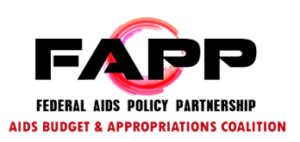ABAC letter on the importance of federal programs and funding for ending HIV in the United States


March 6, 2023
The Honorable Kay Granger
Chairwoman
Committee on Appropriations
United States House of Representatives
Washington, DC 20515
The Honorable Rosa DeLauro
Ranking Member
Committee on Appropriations
United States House of Representatives
Washington, DC 20515
The Honorable Patty Murray
Chairwoman
Committee on Appropriations
United States Senate
Washington, DC 20515
The Honorable Susan Collins
Vice Chairwoman
Committee on Appropriations
United States Senate
Washington, DC 20515
Subject: Importance of Federal Programs & Funding for Ending HIV in the United States
Dear Chairwoman Granger, Ranking Member DeLauro, Chairwoman Murray, and Vice Chairwoman Collins:
We write to you as co-chairs of the AIDS Budget and Appropriations Coalition (ABAC), a workgroup of the Federal AIDS Policy Partnership (FAPP), to underscore the important role and responsibility the federal government has in addressing HIV in the U.S. While we still do not have a cure or a vaccine, we have the science and tools to eventually end HIV in the United States through science-based prevention and treatment programs. However, to end this potentially deadly infectious disease, public health programs across the country must have the sufficient resources and proper policies in place. The federal government, including the commitment of federal funding for HIV programs on a bipartisan basis, has been at the cornerstone of our nation’s response to HIV for the past 40 years and we look forward to working with you this year to continue this tradition.
According to the CDC, there are approximately 1.2 million people living with HIV in the U.S.[1] While much progress has been made in addressing HIV through improved testing, prevention, and treatment programs, we still have too many new infections per year, too many people who are not diagnosed, and too many people not on antiretroviral treatment and virally suppressed. After years of steady declines, the number of new infections has plateaued since 2013 at around 36,000 per year. Additionally, only 63 percent of people diagnosed with HIV in the U.S. are virally suppressed, a figure that is much lower than some PEPFAR funded countries.
Left undiagnosed and untreated, HIV will most likely lead to death and further transmission of the virus to others. In addition to impacting the health of the individual, HIV also is costly to treat. A study published in 2021 found that average lifetime HIV-related medical costs for a person with HIV are $420,285 (in 2019 dollars).[2] That is just one reason why we must invest in HIV prevention.
HIV disproportionately impacts certain communities, and that is why prevention and treatment programs must be focused on specific populations. In the U.S. Black/African American people accounted for 42 percent of all new HIV diagnoses in 2020, while Hispanic/Latino people represented 27 percent of all new HIV diagnoses. HIV also disproportionately impacts gay and bisexual men, Black heterosexual women, transgender women, and people who inject drugs. In addition, geographic disparities exist with 53 percent of new HIV infections in 2019 occurring in the Southern region of the U.S. Unfortunately, there still is much stigma associated with HIV.
Knowing that we have the scientific tools to end HIV and to address the medical and human toll, in 2019, President Trump announced the Ending the HIV Epidemic in the U.S. initiative (EHE), a significant concerted effort to enhance HIV diagnoses, prevention and treatment programs. This ten-year initiative to end HIV by 2030 calls for increased federal funding initially focused in the 57 jurisdictions which contribute over 50 percent of the new HIV diagnoses in the U.S. While this initiative has received funding over the last 4 years, it remains severely underfunded based on the models that were run at its creation showing the investment needed to end HIV by 2030. We are pleased that President Biden has continued the federal government’s commitment to end HIV by 2030, and in FY2023 requested $850 million to fund this initiative, although only $573 million was appropriated. The Ending the HIV Epidemic initiative is a multi-faceted program, and its funding is appropriated to the following agencies:
- CDC Division of HIV Prevention for testing, linkage to care, and prevention services;
- HRSA Ryan White HIV/AIDS Program to expand comprehensive treatment and care for people living with HIV;
- HRSA Community Health Centers to increase clinical access to prevention services, particularly PrEP;
- The Indian Health Service (IHS) to address and combat the disparate impact of HIV and hepatitis C on American Indian/Alaska Native populations; and
- NIH Centers for AIDS Research to expand research on implementation science and best practices in HIV prevention and treatment.
The Ending the HIV Epidemic initiative is built upon and relies upon our nation’s underlying public health response to HIV including the Health Resources and Services Administration (HRSA), Centers for Disease Control and Prevention (CDC), and other programs. Funding from these agencies is distributed to state and local health departments, community and academic health centers, and community-based organizations across the country.
The much-heralded Ryan White HIV/AIDS Program, administered through HRSA, has provided medications through the AIDS Drug Assistance Program (ADAP), medical care, and essential coverage completion services, such as case management and adherence services, to low-income, uninsured, and/or underinsured individuals living with HIV for over 30 years. Nearly three quarters of Ryan White Program clients are racial and ethnic minorities, and nearly two thirds are under the federal poverty level. With 89 percent of Ryan White Program clients achieving viral suppression, the program is a model for a successful public health response to an infectious disease. In 2020, the Ryan White Program served 566,416 clients and received $2.3 billion, an amount that has basically stayed the same for ten years while its number of clients continues to grow. When adjusted for inflation, Ryan White Program funding has not been increased since 2001, and funding has slowly decreased since 2013 based on 2001 dollars.[3] Since HIV treatment is a lifelong endeavor, it is essential that funding for this program be maintained and increased to address client growth and inflation.
The CDC’s Division of HIV Prevention, working with state and local health departments, is responsible for the nation’s HIV surveillance system through HIV testing programs which is key in identifying people and regions most impacted by HIV. CDC also funds linkage to care and treatment programs, public education campaigns, condom and syringe service programs, rapid response to new outbreaks, and support for pre-existing prophylaxis (PrEP) programs.
PrEP are medications that prevent HIV and were first approved by the FDA in 2012. Since then, nearly 400,000 new HIV infections have occurred in the U.S. because not everyone who can benefit from PrEP is taking it. CDC estimates that approximately 1.2 million people can benefit from PrEP but only 30 percent of them are taking it. Uptake is especially low among the racial and ethnic groups most impacted by HIV. For example, Black people represent 14 percent of PrEP users, but 42 percent of new HIV diagnoses while Hispanic/Latino people represent 17 percent of PrEP users and 27 percent of new HIV diagnoses. In order to bring down the number of new HIV infections, which includes increasing the use of PrEP, we must invest more in CDC HIV prevention programs. Unfortunately, funding has remained flat for the last ten years.
There are also many other critical federal programs that are essential to ending the HIV epidemic in the U.S. including: HIV research at NIH; the Minority HIV/AIDS Fund; HUD’s Housing Opportunities for Persons with AIDS (HOPWA) program; other programs at the CDC that address the syndemics of HIV, including hepatitis, STDs and TB; and several mental health and substance use programs at SAMHSA.
The AIDS Budget and Appropriations Coalition looks forward to working with you and your colleagues this year as you maintain the federal government’s commitment to ending HIV and ensure there is sufficient funding for our nation’s response to HIV. We must not lose our focus on HIV and allow an infectious disease to spread throughout our country. Instead, we must accelerate our efforts and ensure there are funding and policies in place to prevent, diagnose, care, treat, house, and research HIV.
Should you have any questions now or throughout the year, please contact the ABAC co-chairs Nick Armstrong at narmstrong@taimail.org, Drew Gibson at dgibson@aidsunited.org, Emily McCloskey Schreiber at eschreiber@nastad.org, or Carl Schmid at cschmid@hivhep.org.
Sincerely,
Carl E. Schmid II
Executive Director
HIV+Hepatitis Policy Institute
Nick Armstrong
Manager, Advocacy and Government Affairs
The AIDS Institute
Emily McCloskley Schreiber
Senior Director, Policy & Legislative Affairs
NASTAD
Drew Gibson
Director of Advocacy
AIDS United
cc: Members, U.S. House of Representatives and Senate
[1] Centers for Disease Control and Prevention, HIV Basic Statistics, https://www.cdc.gov/hiv/basics/statistics.html, accessed February 13, 2023.
[2] Bingham A, Shrestha RK, Khurana N, Jacobson EU, Farnham PG. Estimated Lifetime HIV-Related Medical Costs in the United States. Sex Transm Dis. 2021 Apr 1;48(4):299-304. doi: 10.1097/OLQ.0000000000001366. PMID: 33492100.
[3] Kaiser Family Foundation, The Ryan White HIV/AIDS Program: The Basics. 2022, Nov 3; https://www.kff.org/hivaids/fact-sheet/the-ryan-white-hivaids-program-the-basics/.